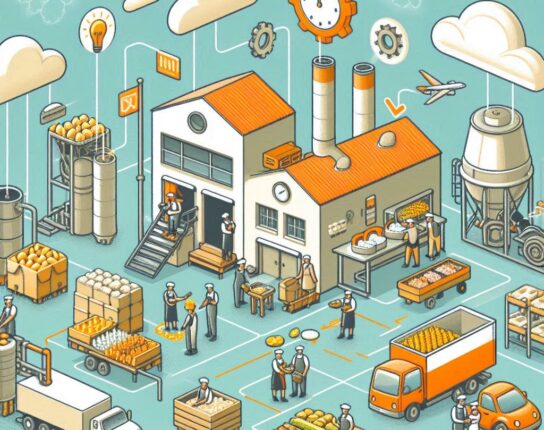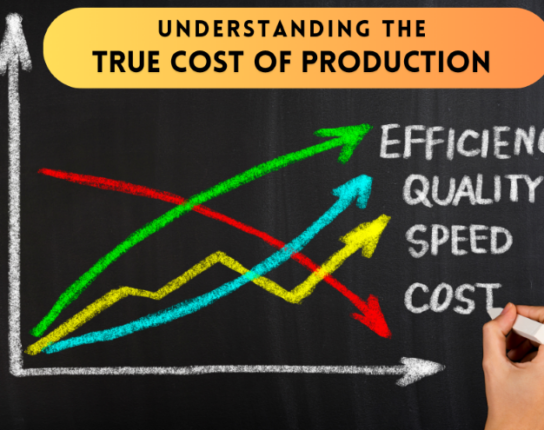And just like that, we’re at the end of another year. Food manufacturers begin to finalize their operational and capital investments for 2022. As we look towards the next year, there are some top challenges food manufacturers can expect to face in 2022, that we at Harvest Food Solutions think will stand out more than others.
Top challenges food manufacturers can expect
Inflation
One of the challenges food manufacturers can expect in 2022 is inflation. Food manufacturers are facing higher input costs across the board, for everything from food products, to packaging, to freight, manufacturing, and pandemic-related costs. And while the price of raw materials goes up and needs to be paid for immediately, this increase in price does not immediately (if at all) get reflected on the price tag the customer sees, leaving the business to absorb these increases.
In 2022 food companies will continue to assess aspects across their business, including products, supply chain, and promotions to help mitigate the costs.
Labor Shortages
Another of the challenges food manufacturers can expect in 2022 is a labor shortage. While 2021 saw food manufacturers face labor shortages due to shutdowns and Covid regulations, 2022 is likely to see fewer worker shortages as governments and companies alike take measures to step up to pre-pandemic levels. Some of the measures taken by businesses include injecting life into social media strategies, highlighting the benefits of working for the company, and promoting a culture of employee and community wellbeing to humanize the brand.
Other manufacturers have partnered with local schools to support trade programs and offer internships and training that lead to full-time employment as another way to attract new talent to their industries.
Supply Chain
One of the challenges food manufacturers can expect in 2022 is the supply chain. The pandemic has shown how vulnerable supply chains are, with the shortages caused by panic-buying and hoarding. Recent heavy rains in British Columbia, California wildfires, and container ships stuck in the Suez Canal have further added to supply chain woes, in addition to strikes and accidents.
The United States is home to approximately 57,000 food processors, and many of them are completely unprepared for catastrophe. Although nobody has tallied the costs to reflect the damage to the food processing industry alone, the immense financial impact that has been incurred is undeniable. All these situations have caused food manufacturers to sit up and assess their own supply chains, and start proactively preparing multiple recovery plans to help minimize supply chain disruptions. These could include diversifying suppliers, creating alternative delivery routes, and using alternative modes of transportation.
Sustainability
Another of the challenges food manufacturers can expect in 2022 is sustainability. As concerns around the climate crisis continue to increase, and so do questions about the impact of other activities on the environment as well. The pandemic saw the fight against plastic waste take a few steps backward due to the need to sanitize and keep food items safe, but as the pandemic continues to (hopefully) wane, food manufacturers should look to put sustainability in the driver’s seat again. This includes looking at ways to reduce food wastage during the manufacturing process.
Related is the shift towards more plant-based food products, as people continue to adapt their lifestyles to achieve their health and lifestyle goals. These preferences can be seen in menu changes at fast food places or new versions of old favorites in the grocery store aisle. 2022 will bring continued innovation in the food industry as it continues to keep up with customer preferences.
Food Safety Scrutiny
Celebrities aren’t the only ones having their every move examined under a microscope. The paramount concern of a food company is that of food safety, and keeping up with stringent and changing governmental guidelines and health regulations – but that isn’t anything new. But the internet and social media have added to that mix. While the internet has provided us with an unprecedented amount of information, it also has increased the amount of information a consumer expects to know – and whatever is out there gets nitpicked, and what isn’t, will all be speculated upon. Where do the ingredients come from? What is the environmental impact?
Already, we see companies changing the information on their labels to be more in line with what people are looking for. When there’s more that can’t fit on a label, the use of enhancements such as QR codes to easily direct consumers to the relevant websites.
Cyber Attack
Recent ransomware attacks have raised questions about cybersecurity in the food industry – and many food companies’ computer systems are at risk. Many are slow to address digital adoption and as a result, are vulnerable to ransomware attacks because their existing technology systems are outdated and unmaintained.
And once the technology has been adopted, it is imperative that it is kept up to date and secure to ensure all their data remains protected from cyberattacks, and is easily retrievable should it ever need to be.
How can Harvest help solve the top challenges food manufacturers can expect in 2022?
Yes, we’ve all heard it before: Change is the only constant. This is why it is vital to expect and anticipate change, rather than wait and react to it. In order to stay competitive, food manufacturers need to be proactive in adapting to anticipated change and taking opportunities as they arise.
Supply Chain Visibility
Especially during uncertain times, with a reduced workforce and decreases in production, it is more important than ever to understand every link in your global supply chain. The more links you have in your supply chain, the more important it becomes that key players have access to necessary data. The pandemic has helped food companies dig deeper into the technology that is helping businesses pivot as consumer shopping trends shift. Food manufacturers need wide access to up-to-date information in order to stay ahead of the trends.
Take charge of your supply chain management. Harvest Accounting & Operations put supply chain data in your hands, right where you need it. Plan your raw material and packaging needs on-demand; track production line scheduling; manage delivery schedules — all in one place.
Food Safety
One minor misstep in handling foods and your bakery can easily turn into a nightmare. So, what can you do?
The perishable food industry comes with its difficulties. It’s a fast-paced work environment that tends to be incredibly competitive. If a business owner does not stay up to code on all the safety rules and regulations, it could be the end of the business.
These reasons are why we at Harvest Food Solutions are here to help you. The constant changes in compliance requirements for the packaging of foods keep our experts working around the clock to make sure your business practices are still up to date. We have extensive experience in baking, gluten-free, cookies, confectionaries, and wholesale distribution. We can help institute best standard practices, get you to set strategic goals, meet benchmark standards and implement standards to help with your compliance and compete with larger retail clients.
Pricing
With better visibility on costs, food companies can better respond to necessary price changes or use raw material cost pressures to justify better order conditions with customers. This is especially true with freight costs. But you need to price smartly using other tools that influence your costs.
Harvest has a dynamic financial management feature that gives teams the tools and visibility needed to provide fast and accurate performance. It allows you to bring more clarity to your financial performance while also reducing your closing time. Here are the features that assist with the finances:
- Costing: Enhanced costing routines allow you to quickly and easily identify your product component costs.
- Receivables: Improve cash forecasting and reduce transactional processing costs.
- Purchasing: Powerful tools designed to track and recommend a purchasing strategy. You can manage price, ordering guidelines, delivery requirements, and allergen controls in one spot.
- Cash Flow: By automating systems and consolidating data, you can get cash faster to support expenses and other business decisions.
- Reporting: Advanced reporting capabilities allow you to design reports to meet business needs.
- EDI Integration (electronic data interchange): Send and receive electronic invoices, credit memos, sales orders, and shipping notifications using the document exchange service.
Cyber Security
The last time you looked at software, you might have been nervous about a move to a cloud-based system. Makes sense, 10 years ago internet access in remote locations was not what it is today. Wi-Fi access in all the corners of your plant or freezers wasn’t great. Well, that was 10 years ago. Today, cloud-based systems have proven to be more secure and reliable than on-premise systems. They are also lower cost as you don’t need heavy server infrastructures and dedicated IT teams to spend time managing them.
All this is in addition to the other benefits of moving to the cloud, which include accessibility – being able to work through desktop, tablet, or mobile devices.
Conclusion
Harvest’s users provide insight and direction on our common code platform. Each customer is unique so our flexible product can be tailored without compromising an upgrade path. This ensures all of our customers get an evolving product to respond to new industry requirements, at a lower cost for all. Speak to one of Harvest’s experts to see how to help future-proof your business.










